List of Authors
>>About this blog
Recent blog post
|
[CAM]
February 11, 2018 12:00
The street between Ginza 5-chome and 6-chome is called "Miyuki-dori", and this name is derived from the fact that Emperor Meiji used this street from the Imperial Palace to the ceremony at the Naval Academy, Naval University (Miyuki) and Hamarikyu. However, I didn't know when this was the name that started, but I would like to introduce this point because it was featured in the Asahi Shimbun "Language Square" on February 7. .
According to this article, around 1936, when the invitation to the Tokyo Olympics in 1940 (the World Exposition was planned to be held in 1940, but both were canceled due to intensifying war) was decided, some people wanted to make Tokyo a beautiful city that could be used worldwide. Painter Tsuguji Fujita, poet Yaso Saijo, and other cultural figures returning from France have formed a group called Marikai based in Ginza, recommending the beautification of Yamashitabashi Street, the maintenance of street lights and streets, and the name is available in the world. I called for something to do.
At the end of the selection, the magazine "Ami Do Puri" issued by the Marikai was published in the June 1936 issue of the magazine "Ami Do Puri" that was named "Miyuki Street to commemorate the history." It is written.
[CAM]
January 10, 2018 18:00
Today, the Japan Tourism Agency has received the following notice and training information by e-mail. The revised law came into effect on January 4th.
Finally, the Tokyo Olympic mood will be excited.
Although it is currently inbound boom, tourists from China, Taiwan, and Korea seem to be overwhelming in number, and Chinese is heard everywhere in Ginza, Tokyo. However, recently, I feel that the number of buses carrying tourists from China has stopped has decreased since its peak. Will there be a large number of tourists from China even at the Olympics?
Revised Interpreter Guide Law Enforcement Guide
1. Background
In order to improve the environment for accepting foreign tourists visiting Japan, we will review the regulations on interpreter guide qualifications and register so-called land operators who plan and arrange travel in order to ensure travel safety and fair trade. The "Act on Partial Revision of the Interpretation Guide Law and the Travel Business Law" (Act No. 50 of 2017), which takes measures such as the establishment of the system, was promulgated on June 1, last year.
2. Major amendments to the Interpreter Guide Act
(1) Abolition of Business Exclusive Regulations and Name Exclusive
(2) Expand the Regional Interpreter Guide System nationwide
(3) Review of examination subjects of the National Interpreter Guide Examination
(4) Nationwide interpreters are required to attend training conducted by registered training institutions.
The business monopoly regulation has been abolished, and in the future, even those who do not have qualifications can perform paid interpreting guidance services. In addition, since the name exclusive regulation will survive, unqualified persons cannot claim "national interpreter guide", "local interpreter guide" or similar names.
(* Please see the Japan Tourism Agency website for information on the interpreter guide system after the enforcement of the revised law.)
[CAM]
December 19, 2017 09:00
I like the flowers of camellia. I especially like the simple Yabu camellia. In addition, the kanji character "Tsubaki" has a large number of pictures, has a sense of dynamism, but has a sense of stability, and prefers characters. Therefore, I like the name "Hanatsubaki-dori". My blog name is from CAMellia.
The street that crosses 7-8-chome on Chuo-dori, the main street of Ginza, was named "Hanatsubaki-dori" because Izumo camellia (Japanese camellia), which was contributed by Izumo in the early Showa era, was planted as a street tree.
The pedestrian bridge over Showa-dori is equipped with an escalator and elevator. It is called "Tokimeki Bridge".
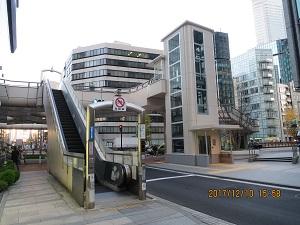
From here, when you walk toward Sotobori-dori St., you will find a statue of Hana, a ponytail girl with camellia flowers. This was set up to commemorate the maintenance of granites on the street.
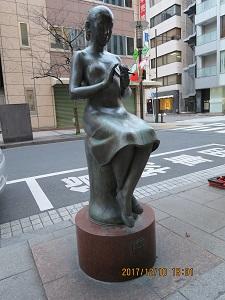
A little further from here, there is a monument to the site of "Ginbari" (Ginza 7-9-11). There is a monument labeled "Former Ginbari Ruins".
Ginbari is located here from 1951 to December 29, 1990, and is said to be Japan's first chanson coffee shop. Akihiro Miwa, Masako Togawa, Tokiko Kato, Yukari Kaneko and others were produced, and Yukio Mishima, Akiyuki Nosaka, Rei Nakanishi, Junnosuke Yoshiyuki, Shuji Terayama, Junichi Nakahara and others gathered. December 29 is called "Shanson's Day" after the closing of this famous store.
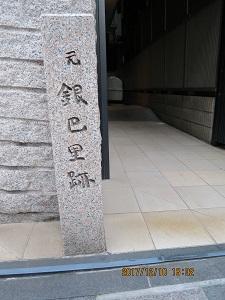
When you come to Chuo-dori toward Sotobori-dori St., you will see the Tokyo Ginza Shiseido Building (Shiseido Parlour) on the left side of Sotobori-dori St. on the corner of Ginza 8chome. It is characterized by the red brick color of the outer wall. On the right hand, there is SHISEIDO THE GINZA at Ginza 7-chome 8-10, and Shiseido Ginza Head Office Building (Hanatsubaki Hall) on Namiki-dori St. (Ginza 7-5-5), and successful Inari Shrine is enshrined on the roof of the head office building (Page 55). There are three Shiseido buildings near Hanatsubaki Street.
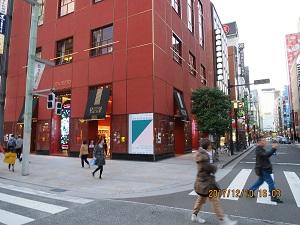
In Ginza 7-chome, at the end of SHISEIDO THE GINZA, there is Toyo Iwaineari Shrine (Page 55 of Monoshiri Encyclopedia).
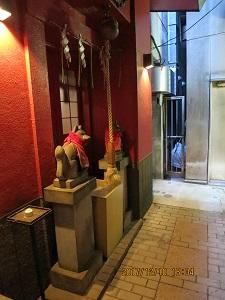
To the Sotobori-dori St., go a little right along Suzuran Street and you will find "Sushi Tsubaki" (Ginza 7-7-6), and a large camellia tree is placed at the entrance. Unfortunately, I haven't seen the inside yet, but the counter seems to be a single piece of Kiso cypress.
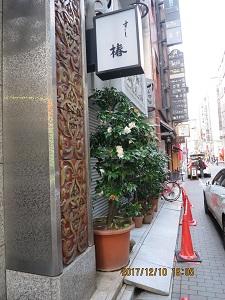
Ginza 7-7-11 is the Tsubakiya Coffee Shop Main Building. I sometimes use it, but there is a calm and antique atmosphere inside.
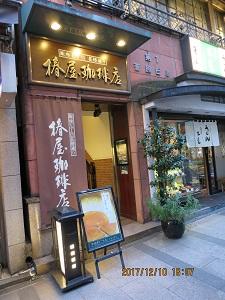
On the other side (Ginza 8-8-1), there is the CAMILLE FOURNET store. "Camille Fournet (Camille Fournet) was founded in 1945 by the harness craftsman Kammille Forne in the French/Piccardi region, which flourished with hunting and saddle making, and since 1980, it has become an integral part of the luxury watch industry."
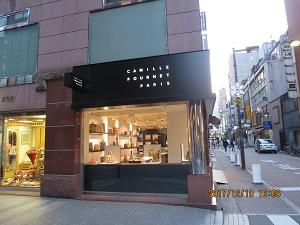
[CAM]
Nov. 9, 2017 18:00
The Chuo-ku Tourist Information Center, located at Kyobashi 2-chome, has a wealth of English-language information materials. However, when I visited, I thought I couldn't see any foreigners (including Asians) at all. Unlike the Nihonbashi Tourist Information Center located in the flower square under Nihonbashi, it is a pity that it is a little impossible to find it along the way.
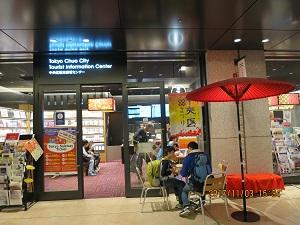
I walked a little near Kyobashi, but the explanatory version placed on "Kyobashi's main pillar" was written in English, and the monument of "Edo Kabuki Birthplace" also engraves English descriptions It's engraved.
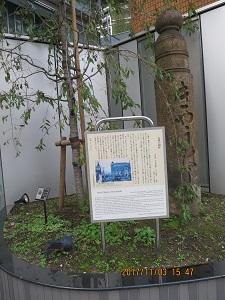
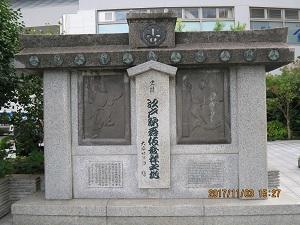
On the map, English is also written at key points.
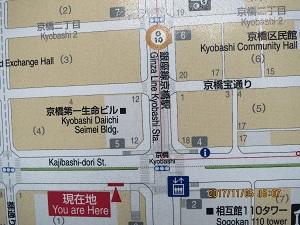
However, on the way home, I got on the Tokyo bus and looked at the English notation on the destination display, and said, "Sumitomo."
I was a little surprised to see a mixture of English and Japanese romaji, such as Twin Biru and River City Nijyuichi. "Nijyuichi" in "Biru" should be renewed in English. If there is a deep idea that foreigners can pronounce in Japanese, it is different.
[CAM]
October 15, 2017 18:00
Earlier, I mentioned that there was no English explanation on the explanation board in the neighborhood of Ningyocho, but it seems that a considerable number of explanation boards in the ward have changed to English notation. For example, those installed at Harumi's "Japan World Exposition Secretariat Building Remains" and Tsukuda's "Sea House Remains".
The "Shikaikan Ruins" explanation board is displayed as March 2009 (2009), so it was installed more than 8 years ago. (It was clear that the photos listed in the "Citizens' Historic Site" section of "Monoshiri Encyclopedia" were taken when they were not written in English, but the latest published in October 2017 In the edition, it seems that it was finally replaced with the latest photo.)
When explaining in English, for example, if you say that most of Chuo-ku is a landfill (reclaimed land), this may contain multiple Rs and L, so it can be understood only by verbally. I feel unrecognized. For example, according to the dictionary, "reclaim" is used to reclaim the sea and "fill up" is used to reclaim ponds and rivers, so it can be mistranslations.
In order to avoid misunderstandings, I think it would be better to have a pattern of verbally speaking the main points while giving explanations in English instead of verbally communicating.
In a certain Asian country, the driver flies too much, so when I said "Safety First", I was turned around with a shaky expression and I was about to shout, "Isn't it dangerous!" When I thought later, the phrase "Safety First" was Japanese English, and it seemed that I heard "First" as "Fast" (fast). If you say "Safety Fast", it's natural to be surprised.
In that way, there is an unexpected misunderstanding just by verbally. Including such meaning, the explanation board in the ward should be changed to one that is written in English as soon as possible.
Description board for "Saikaikan Ruins"
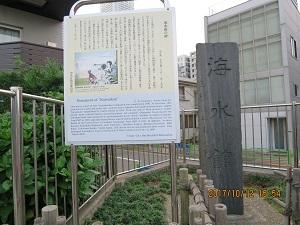
[CAM]
October 12, 2017 16:00
The Nihon Keizai Shimbun's regional economic aspect (Tokyo) on October 11, 2017 reported the establishment of "Nihonbashi Information" (Tourist Information Center) as an example of the establishment of a system for accepting foreign tourists in Chuo-ku. . In addition, Chuo-ku plans to increase the attractiveness of Tokyo's leading sightseeing spots, such as adding information signs in foreign languages so that you can enjoy walking around the city with peace of mind, and enhancing the Internet environment. It has been stated. According to the article, 48% of visitors to Tokyo visit Ginza and 37% visit Nihonbashi (including around Tokyo Station and Marunouchi) (Tokyo 2016 survey).
It means "addition of information signs in foreign languages", but in the case of foreign language notation, I think that it is necessary to have an English part that shows the contents, not just Romanization of Japanese. At present, there are signs that are limited to Romanization only. For example, you should not only display "Amazakeyokocho", but also add "Alley", "Street", etc. Foreigners who cannot understand Japanese simply by Romanization of place names do not understand the "contents" at all.
This English notation of the place name is important, and when I moved alone in Russia and other Russian areas, I couldn't even pronounce the street display of the city, so I was lost and could send it to the promised time Even if I could not contact my current location, and I had a problem (at that time, I was not in a situation where I could use my mobile phone overseas). It was my experience in Moscow, but I was dropped off on the way by a taxi I picked up in the city, I could hardly speak English in the city, and with the help of a young man who caught me, he told me that you were a brave man. It was about 10 years after the collapse of the Soviet Union, and I was reminded that general taxis in Moscow were notorious, and even a little expensive, they were told that they should not ride anything other than the taxi they applied for at the hotel.
Also, during the preliminary survey of the "October 8 Welcome Central Inbound Tour", when I walked around Ningyocho, I was dissatisfied that a considerable number of explanation versions in the city did not include English explanations only in Japanese explanations . I think that I was able to confirm only the English explanation of two Karakuri dolls, except for the signboards set up by the ward's Board of Education.
Nihonbashi Information
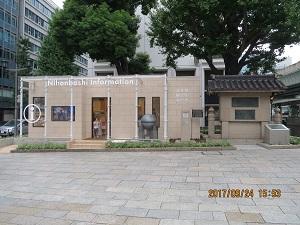
|
Links
|

